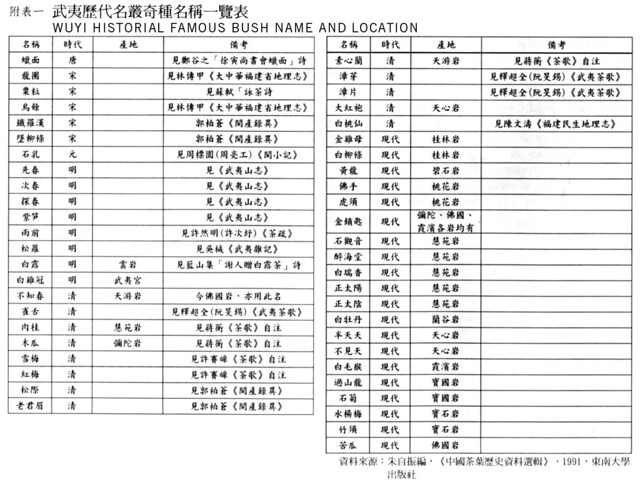umijoshi wrote:It's sort of hard to find information on different types of oolong, from what I've gathered around the net so far, it really comes down to the following list. Everything else seems to be location dependent.
http://i.imgur.com/ZmnEm57.png
Can someone who knows more about oolong add to this?
I don't really see any value in looking at it this way. There are also inaccuracies in it as well (baozhong/pouchong, for example, is usually only barely oxidized).
The main things are these:
Cultivar -- There are thousands of different strains of the tea plant, just like there are with orchids and such. Each will have unique characteristics, and each will lend best to a type of tea.
Location -- Each area tends to have certain cultivars, and has slightly different growing conditions. More importantly, the tea producers of each region have learned, throughout history, how to best produce the tea plants grown there.
The history also goes back to before there was fast transportation, and so they learn from and compete with the immediate neighbors, which results in each area being known for a particular type of tea with particular characteristics.
This is why many people think of types of tea as "tea from this/that area," even more than they think of it as green, wulong, black, etc. It's probably more productive to think of it that way.
Oxidation and roast -- Even specific types of tea, like Tie Guan Yin and Da Hong Pao, can be produced with the full range of oxidation and roast. They will all have basic similarities among the same kinds, but the levels of oxidation and roast will probably be among the biggest determining factors of your personal preference. If you like a high-oxidation, high-fire Da Hong Pao, then you're probably more likely to like a high-ox, high-fire Tie Guan Yin than you are to like a low-ox, low-fire Da Hong Pao.
It's also important to get acquainted with how oxidation and roast affect the teas -- how it affects the taste, aroma, etc. A high-fire, high-oxidation Da Hong Pao will seem like a totally different tea to a low-oxidation, low-fire Da Hong Pao; until you can tell the difference, it's all going to seem kind of arbitrary and confusing, and you'll probably attribute differences in quality to some of these other things (e.g., it's not uncommon for people to get higher quality green wulong and poor quality high-fire, and conclude that they don't like roasted tea, even though they may like high-fire tea from another area even better).
The best thing you can do is to get the same tea with different levels of oxidation and roast. If you can, getting different cultivars from the same producer (also with different levels of oxidation and roast) would be even better. Drink them back-to-back so that you can see the similarities and differences between them.
In the end, getting some experience with as many different teas as possible will teach you the most. That's when you'll be able to start breaking it down to the specifics of what you like most.
